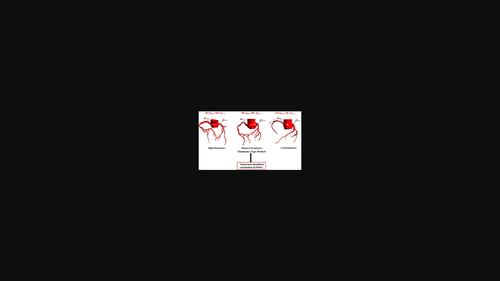当前位置:
X-MOL 学术
›
Int. J. Numer. Method. Biomed. Eng.
›
论文详情
Our official English website, www.x-mol.net, welcomes your feedback! (Note: you will need to create a separate account there.)
Left and right coronary artery blood flow distribution method based on dominant type
International Journal for Numerical Methods in Biomedical Engineering ( IF 2.1 ) Pub Date : 2023-01-11 , DOI: 10.1002/cnm.3681 Xue Wang 1 , Jincheng Liu 1 , Na Li 1 , Junling Ma 1 , Mingyan Chen 1 , Yili Feng 1 , Bao Li 1 , Jian Liu 2 , Youjun Liu 1 , Liyuan Zhang 1
International Journal for Numerical Methods in Biomedical Engineering ( IF 2.1 ) Pub Date : 2023-01-11 , DOI: 10.1002/cnm.3681 Xue Wang 1 , Jincheng Liu 1 , Na Li 1 , Junling Ma 1 , Mingyan Chen 1 , Yili Feng 1 , Bao Li 1 , Jian Liu 2 , Youjun Liu 1 , Liyuan Zhang 1
Affiliation

|
The purpose of the current study was to investigate the effects of left/right coronary artery flow distribution on calculation of fractional flow reserve derived from coronary computed tomography angiography (FFRct) in different dominant types. First, 195 patients were collected to count the distribution ratios of the three categories: right dominance (RD), balanced dominance (BD), and left dominance (LD). Ratios of diameters of the left/right coronary arteries (DLCA:DRCA) of the three types were calculated and used to represent the ratio of flow distribution (QLCA:QRCA) in the dominant type method. The other method was known as the fixed ratio method (QLCA:QRCA = 6:4). Second, a total of 73 patients with coronary artery disease (CAD) were enrolled for numerical calculation. A 0D/3D geometric multiscale model was used for the numerical simulation of FFR and the results of the fixed ratio method and the dominant type method were recorded as F-FFRct and D-FFRct. Lastly, invasive FFR(clinic-FFR)was used as a standard to evaluate the consistency and diagnostic performance of F-FFRct and D-FFRct. Corresponding flow distributions for the dominant type method were QLCA:QRCA = 5:5 for RD, QLCA:QRCA = 5.5:4.5 for BD, and QLCA:QRCA = 6:4 for LD. D-FFRct showed a better correlation than F-FFRct (r = 0.85 vs. r = 0.81, both p < .001); the AUC (95%CI) were 0.974 (0.906–0.997, p < .0001) and 0.960 (0.886–0.992, p < .0001). Accuracy, specificity, sensitivity, positive predictive value (PPV) and negative predictive values (NPV) for D-FFRct and F-FFRct were 94.52%, 93.75%, 94.74%, 83.33%, 98.18% and 90.41%, 87.50%, 91.23%, 73.68%, 96.30%, respectively. Overall, the left/right coronary artery flow distribution was affected by the dominant type and the dominant type method was superior to the fixed ratio method in detecting coronary ischemic lesions.
中文翻译:

基于主导型的左右冠状动脉血流分布方法
本研究的目的是探讨左/右冠状动脉血流分布对不同主要类型冠状动脉计算机断层扫描血管造影(FFRct)计算血流储备分数的影响。首先,收集195名患者,统计右优势(RD)、平衡优势(BD)和左优势(LD)三类的分布比。计算三种类型的左/右冠状动脉直径比(D LCA:D RCA )并用其表示主导类型方法中的流量分布比(Q LCA:Q RCA )。另一种方法称为固定比率法(Q LCA : Q RCA = 6:4)。其次,共纳入73名冠状动脉疾病(CAD)患者进行数值计算。采用0D/3D几何多尺度模型对FFR进行数值模拟,固定比率法和主导型法的结果记为F-FFRct和D-FFRct。最后以侵入性FFR(clinic-FFR)为标准评价F-FFRct和D-FFRct的一致性和诊断性能。主要类型方法的相应流量分布对于 RD是Q LCA : Q RCA = 5:5,对于BD是Q LCA : Q RCA = 5.5:4.5,对于 LD是Q LCA : Q RCA = 6:4。D-FFRct 显示出比 F-FFRct 更好的相关性(r = 0.85 与r = 0.81,均p < .001);AUC (95% CI) 分别为 0.974 (0.906–0.997, p < .0001) 和 0.960 (0.886–0.992, p < .0001)。D-FFRct 和 F-FFRct 的准确性、特异性、敏感性、阳性预测值 (PPV) 和阴性预测值 (NPV) 分别为 94.52%、93.75%、94.74%、83.33%、98.18% 和 90.41%、87.50%、91.23分别为 %、73.68%、96.30%。总体而言,左/右冠状动脉血流分布受显性类型影响,显性类型法在检测冠状动脉缺血病变方面优于固定比率法。
更新日期:2023-01-11
中文翻译:

基于主导型的左右冠状动脉血流分布方法
本研究的目的是探讨左/右冠状动脉血流分布对不同主要类型冠状动脉计算机断层扫描血管造影(FFRct)计算血流储备分数的影响。首先,收集195名患者,统计右优势(RD)、平衡优势(BD)和左优势(LD)三类的分布比。计算三种类型的左/右冠状动脉直径比(D LCA:D RCA )并用其表示主导类型方法中的流量分布比(Q LCA:Q RCA )。另一种方法称为固定比率法(Q LCA : Q RCA = 6:4)。其次,共纳入73名冠状动脉疾病(CAD)患者进行数值计算。采用0D/3D几何多尺度模型对FFR进行数值模拟,固定比率法和主导型法的结果记为F-FFRct和D-FFRct。最后以侵入性FFR(clinic-FFR)为标准评价F-FFRct和D-FFRct的一致性和诊断性能。主要类型方法的相应流量分布对于 RD是Q LCA : Q RCA = 5:5,对于BD是Q LCA : Q RCA = 5.5:4.5,对于 LD是Q LCA : Q RCA = 6:4。D-FFRct 显示出比 F-FFRct 更好的相关性(r = 0.85 与r = 0.81,均p < .001);AUC (95% CI) 分别为 0.974 (0.906–0.997, p < .0001) 和 0.960 (0.886–0.992, p < .0001)。D-FFRct 和 F-FFRct 的准确性、特异性、敏感性、阳性预测值 (PPV) 和阴性预测值 (NPV) 分别为 94.52%、93.75%、94.74%、83.33%、98.18% 和 90.41%、87.50%、91.23分别为 %、73.68%、96.30%。总体而言,左/右冠状动脉血流分布受显性类型影响,显性类型法在检测冠状动脉缺血病变方面优于固定比率法。



























 京公网安备 11010802027423号
京公网安备 11010802027423号